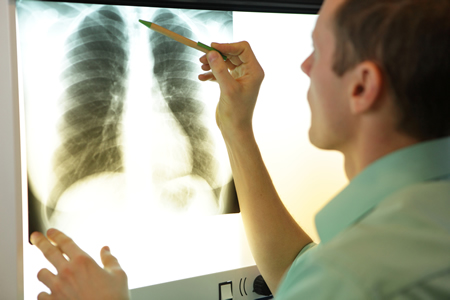[breadcrumb]
A pleurectomy/decortication (P/D) operation involves removal of the pleura along with part of the lung tissue. The aim is to remove malignancy while reducing the incidence of symptoms, such as pleural effusions. Because the procedure does not involve complete removal of the lung, it is often called “lung-sparing surgery”. This quality makes it less radical than an extrapleural pneumonectomy (EPP) procedure, but a P/D operation still qualifies as substantially invasive.[15]
Compared to an EPP operation, a P/D procedure carries a lower risk of perioperative mortality or morbidity.[16] Patients have also shown a high capacity to improve heart and blood functioning after a recovery time of 2 months.[17] Patients tend to exhibit positive outcomes with a P/D when the procedure is complemented with high-dose radiation therapy prior to.[18]
Like EPP — and all radical surgeries — a P/D operation carries the risk of adverse events and side effects. However, studies show that postoperative P/D patients tend to achieve higher quality of life scores compared to those who received an EPP.
[15] http://shc.amegroups.com/article/view/4325
[16] https://link.springer.com/article/10.1007/s11748-014-0389-7
[17] https://www.sciencedirect.com/science/article/pii/S1556086415326691
[18] https://www.lungcancerjournal.info/article/S0169-5002(13)00457-1/fulltext

